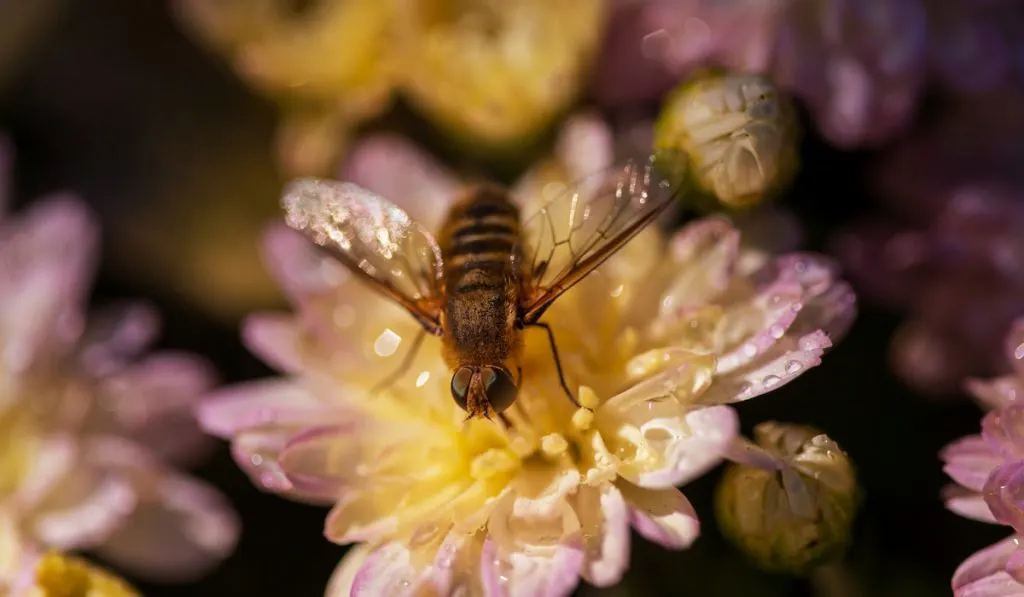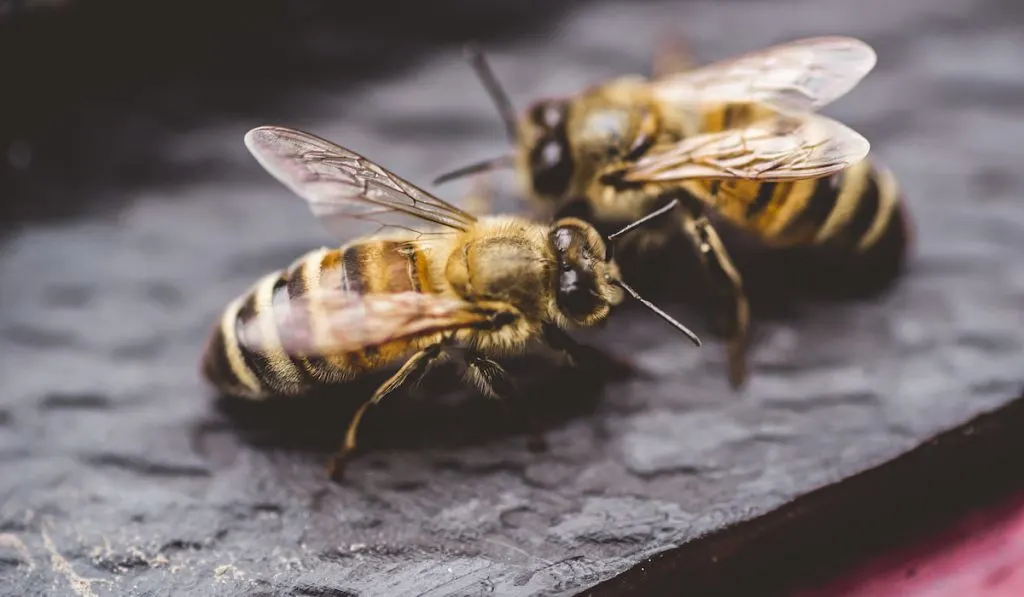*This post may have affiliate links, which means I may receive commissions if you choose to purchase through links I provide (at no extra cost to you). As an Amazon Associate I earn from qualifying purchases. Please read my disclaimer for additional details..
You may have heard it said that darkness will reduce the likelihood of being attacked by bees. But just like much hearsay, investigating whether these claims are actually true is important
Will bees attack at night?
While there is a myth that suggests bees do not sting at night, this is absolutely untrue. If you pose any form of threat to bees, whether in the day or at night, they can and will attack. However, they are less likely to sting when the weather is cold.
Are bees nocturnal? Do they sleep? How does darkness affect their sight? We answer these questions and more below.
Table of Contents
Will Bees Attack at Night?
Generally, bees are only hostile when their colony is threatened or disturbed. More times than not, bees do not attack when they are outside their hive.
Bees can be primed for attack by external stimuli such as vibrations, sounds, dark colors, pheromones from other attacking bees, and even carbon dioxide.
But if exposed to threats within their colony at night, will bees attack? Absolutely.
Bees will attack whenever they sense a threat to their colony regardless of the time of day. Anyone who disturbs a beehive at night may get stung.
A reduced occurrence of bee stings at night may be due to most people remaining indoors after dark while bees stay near their hives.
A reduced rate of bee attacks at night may also be related to the drop in temperature as night approaches. Bees are generally less active when the weather is cold. Temperature plays a more significant role than darkness in influencing bee attacks.

Are Bees Nocturnal?
Most bees are diurnal, or active during daylight hours. However, some species are nocturnal or crepuscular, and these tend to be tropical species. Of the 7 bee families, at least 4 contain various species that are nocturnal or crepuscular.
Nocturnal bees include Megalopta and the Indian Carpenter Bee.
The Sweat Bee species is mainly diurnal. However, they have been seen foraging at night under sufficient moonlight.
Crepuscular bees are those that are active at twilight (dawn and dusk). This group of bees includes the following species:
- Horsefly-like Carpenter Bees
- Feather-Tongued Bees
- The Yellow-Horned Morning Long-Horned Bee
- The Central American Sweat Bee

Can Bees See in the Dark?
Nocturnal bees are more adapted to seeing in the dark than diurnal bees.
Bees have complex eyes. They have 5 eyes that are grouped into two types: simple eyes (ocelli) and compound eyes.
Bees have 2 compound eyes consisting of multiple hexagonal facets. These eyes do not perceive what they see as a single image.
Instead, they perceive images as a mosaic. The compound eyes of bees also help them perceive UV markers that the human eye would ordinarily not see.
Bees have 3 simple eyes (ocelli) located atop their heads. The ocelli are sensitive to light and are particularly useful in differentiating between darkness and light.

In nocturnal and crepuscular bees, the ocelli are evolved to suit their time of activity. These bees have relatively larger ocelli compared to diurnal bees. This makes it easier for them to sense reduced sunlight in the dark.
While they can sense some evasive UV, bees still need some light to see in the dark. In markedly reduced illumination or in total darkness, they turn to other senses for navigation.
For one, bees have some sensory neurons behind their necks. These neurons help them navigate by receiving gravity-related information from the environment.
In some cases, air vibrations guide the movement of bees in the dark, especially when they are in their hive. There is a part of their antennae called the Johnston’s organ. This organ is most vital in sensing air vibrations for navigation in bees.
Bees may also detect members of the hive and intruders through pheromones. whenever it is too dark for bees to see, they have other mechanisms to help with navigation.

Do Bees Sleep?
Bees need their rest, and they do sleep. They spend around 5-8 hours per day resting or sleeping, and they also have a circadian rhythm.
The sleeping pattern in bees can differ based on their roles and age. Young bees spend less time sleeping, and their sleep cycle can be a bit erratic at times.
Foragers sleep more at night since darkness does not favor foraging. Of course, one would expect the foragers among nocturnal bees to sleep more during the day.
The relative inactivity of bees at night is one reason why beekeepers prefer to move them during that period.
Sleeping is vital to bees. Lack of sleep in some bees causes worsening long-term memory. Apart from that, if bees do not get enough sleep, their communication may become inaccurate. Their dances, for one, may lose accuracy and precision.
Bees may also lose orientation when they do not sleep well. This may make it hard for them to find their hive, and in some cases, they could get lost.

Summary
Bees can attack during the day or at night. Darkness does not stop bees from being hostile to intruders or threats.
However, the chances of being attacked at night by a bee are rather low. Like humans, most bees return to their homes at night, and some even spend most of it sleeping.
Resources
- https://beehour.com/do-bees-sting-at-night/
- https://www.honeybeesuite.com/monday-morning-myth-bees-dont-sting-at-night/
- https://pestremovalwarrior.com/do-bees-attack-at-night/
- https://labs.biology.ucsd.edu/nieh/TeachingBee/honeybee_aggession.htm
- https://www.buzzaboutbees.net/do-bees-fly-at-night.html
- https://www.buzzaboutbees.net/why-do-bees-have-5-eyes.html
- https://animals.mom.com/bees-see-inside-hives-9226.html
- https://linkinghub.elsevier.com/retrieve/pii/S0960982215012233

